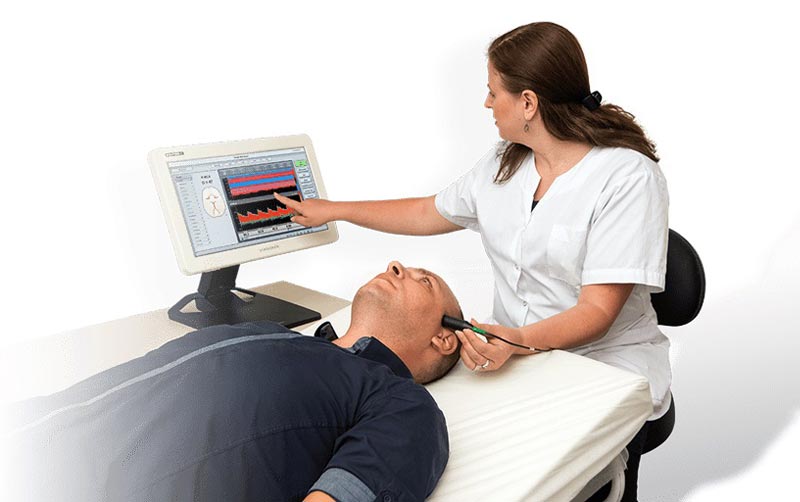Advantages of Robotic Transcranial Doppler for Stroke & Brain Monitoring
12 June 2025
Optimise stroke monitoring using robotic Transcranial Doppler by MedTech Edge for accurate, continuous cerebral blood flow assessment and diagnostics.
Continuous Stroke Surveillance Using Robotic Transcranial Doppler
Round-the-clock cerebral monitoring is essential in managing stroke cases, especially during the post-acute phase. Robotic Transcranial Doppler (TCD) facilitates this requirement through its capability to perform non-invasive and uninterrupted evaluations of intracranial blood velocity. Continuous tracking supports informed decision-making in time-sensitive scenarios.
Application within high-dependency units ensures patients at risk of secondary strokes are monitored without delay. Stroke recurrence and silent infarcts are tracked using dynamic waveform interpretations, offering clinicians data that guide interventions. The system’s non-contact operation limits patient disturbance while maintaining consistent signal accuracy.
Neurological care facilities benefit from this method by incorporating seamless automation. Reduced reliance on manual handling minimises user variability and promotes consistent surveillance. Such automation fosters efficiency in clinical workflows while maintaining diagnostic integrity across extended care durations.
Neurocritical Monitoring Enhanced by Robotic Transcranial Doppler
The Transcranial Doppler proves valuable in neurocritical environments by providing automated cerebral blood flow surveillance with minimal operator input. Its application in neurological intensive care supports timely interventions through accurate and consistent data outputs.
• Supports early autoregulation assessment: Continuous waveform tracking reveals shifts in cerebral autoregulation dynamics. This facilitates timely interventions that stabilise brain perfusion before deterioration sets in.
• Monitors elevated intracranial pressure (ICP): Changes in flow patterns and pulsatility indexes are captured through non-invasive means. Early signs of raised ICP are flagged without relying on invasive probes.
• Reduces clinician workload: The device automates probe positioning and calibration, requiring minimal manual adjustment. This allows personnel to allocate attention to broader aspects of neurocritical care.
• Improves waveform consistency: Robotic mechanisms maintain precise transducer placement throughout prolonged monitoring sessions. This reduces variability and enhances the reliability of diagnostic data.
• Enables data-driven decisions: Trend data and real-time analytics support clinical teams in assessing cerebral perfusion status. Informed adjustments to treatment protocols can be made with minimal delay.
• Adapts to patient movements: The system sustains alignment and contact even as patients reposition during monitoring. Accurate readings are maintained without interruption to workflow.
• Prevents missed deterioration: Subtle changes in flow velocity or pulsatility are automatically flagged for review. This enables early recognition of secondary complications or cerebral ischaemia.
• Integrates with ICU systems: The Transcranial Doppler interfaces with central monitoring platforms for unified data visualisation. Synchronised integration streamlines decision-making and response coordination.
Precision Neurological Surveillance with MedTech Edge
Building on dependable innovation, MedTech Edge delivers robotic Transcranial Doppler systems tailored for accurate neuro-monitoring in demanding clinical environments. Each solution is developed to meet current neurological care standards and enhance routine practice through technological precision.
Enquire with us to integrate advanced Transcranial Doppler monitoring that drives precision in stroke and cerebral surveillance across critical care settings.
Discover how Transcranial Doppler enhances cerebrovascular diagnostics, its clinical value and modern applications: Understanding Transcranial Doppler: A Vital Tool in Cerebrovascular Health
Optimized by: Netwizard SEO





